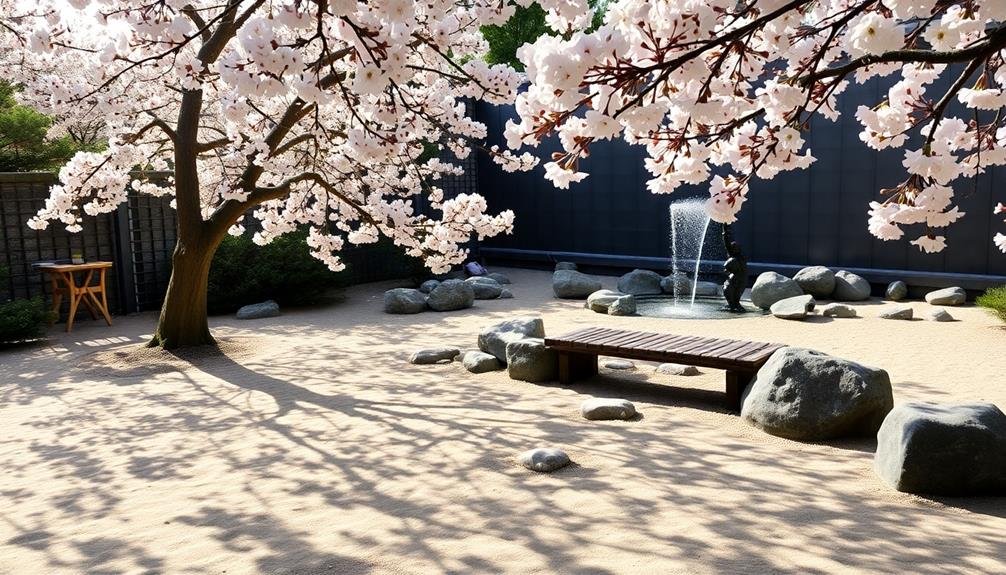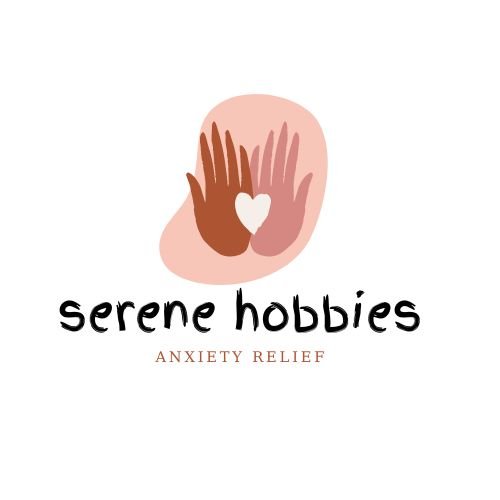Descriptive writing can be a powerful tool to manage anxiety. You can embrace sensory details, focusing on textures, colors, and sounds around you. Paint vivid mental images of peaceful settings to create a calming escape. Explore your emotional landscape by mapping feelings as geographical features. Craft character-driven narratives to embody and process your fears. Describe soothing environments to lower your heart rate and ease tension. Try stream of consciousness writing to release raw thoughts without judgment. Develop metaphors for your anxiety, visualizing it as a physical object you can interact with. These techniques offer a creative path to understanding and relief from anxious thoughts.
Embrace Sensory Details

Embracing sensory details can be a powerful tool in managing anxiety. When you're feeling overwhelmed, take a moment to focus on your immediate surroundings. Notice the textures, colors, and shapes around you. What do you see? Describe it to yourself in vivid detail, as if you're painting a picture with words.
Next, tune into your sense of hearing. What sounds can you identify? Perhaps it's the gentle hum of a fan, the distant chirping of birds, or the soft rustling of leaves. Pay attention to the quality of each sound, its pitch, and rhythm.
Don't forget about your other senses. What scents can you detect? Is there a taste lingering in your mouth? How does your skin feel against your clothing or the surface you're touching?
Paint Vivid Mental Images
Painting vivid mental images can be a powerful anxiety-reducing technique. By creating detailed scenes in your mind, you're able to shift focus away from anxious thoughts and immerse yourself in a calming environment. This practice engages your imagination and helps you regain control over your mental state.
To effectively paint vivid mental images, follow these steps:
- Choose a peaceful setting: Imagine a place where you feel safe and relaxed, such as a beach, forest, or cozy room.
- Engage all senses: Add details for each sense – sights, sounds, smells, textures, and even tastes.
- Include yourself: Picture yourself in the scene, interacting with the environment.
- Practice regularly: The more you use this technique, the easier it becomes to access these calming images.
As you develop your mental imagery skills, you'll find it easier to transport yourself to these tranquil spaces when anxiety strikes. This technique can serve as a portable stress-relief tool, allowing you to create a moment of calm anywhere, anytime.
With practice, you'll be able to quickly conjure these vivid mental images, providing instant relief from anxiety-inducing situations.
Explore Emotional Landscapes

Venture into your inner world by mapping your feelings and visualizing them as a unique emotional terrain.
Picture your emotions as landscapes, with joy as sunny meadows, anger as stormy mountains, and peace as tranquil lakes.
Use colors to represent different feelings, creating a vivid mental image that helps you understand and navigate your emotional state.
Map Your Feelings
Plunge into the intricate world of your emotions by creating a personal emotional landscape. This exercise helps you visualize and understand your feelings, making them more tangible and manageable.
Start by imagining your emotions as a physical terrain, with each feeling represented by a distinct geographical feature.
To map your emotional landscape effectively:
- Choose a base: Begin with a large sheet of paper or a digital canvas, depending on your preference.
- Identify key emotions: List the primary feelings you've experienced recently, such as joy, anger, fear, or sadness.
- Assign landscapes: Match each emotion to a geographical feature that resonates with its nature. For example, anger might be a volcano, while peace could be a serene lake.
- Add details: Incorporate elements like weather patterns, vegetation, or structures to represent the intensity and frequency of your emotions.
As you create your map, you'll gain insights into your emotional patterns and triggers. This visual representation allows you to step back and observe your feelings objectively, fostering self-awareness and emotional regulation.
Regularly updating your map can help you track your emotional journey and progress in managing anxiety.
Visualize Emotional Terrain
Building on your emotional map, it's time to explore your emotional terrain in greater depth. Imagine your emotions as a physical landscape, with peaks, valleys, and varying textures. Anxiety might manifest as a jagged mountain range, while contentment could be a serene meadow. Picture fear as a dark forest and joy as a sun-drenched beach.
As you visualize this landscape, pay attention to the details. Are there paths connecting different areas? What's the weather like in each region? Use your senses to make the experience more vivid. Feel the ground beneath your feet, listen for sounds, and notice any scents in the air.
Now, place yourself within this emotional terrain. Where are you standing? What do you see around you? Explore the landscape, moving through different areas. Notice how your feelings change as you traverse the terrain.
This exercise helps you understand the relationship between your emotions and gives you a new perspective on your anxiety. By visualizing your emotional landscape, you gain insight into your feelings and can develop strategies to navigate challenging areas more effectively.
Color-Code Your Emotions
Assigning colors to your emotions can deepen your understanding of your emotional landscape. This visual technique allows you to map out your feelings, making them more tangible and easier to process. By associating specific hues with different emotions, you're creating a personal emotional color wheel that can help you navigate your anxiety.
To get started with color-coding your emotions, follow these steps:
- Choose your palette: Select colors that resonate with you for various emotions. For example, red for anger, blue for sadness, yellow for joy, and green for calm.
- Create a legend: Write down your chosen colors and their corresponding emotions for easy reference.
- Track your feelings: Throughout the day, jot down your emotions and their associated colors in a journal or app.
- Analyze patterns: Review your color-coded entries regularly to identify emotional trends and triggers.
As you practice this technique, you'll develop a more nuanced understanding of your emotional state. You might discover that your anxiety isn't just one color, but a blend of several hues.
This insight can help you address your feelings more effectively and develop targeted coping strategies.
Craft Character-Driven Narratives
Characters are the heart of any compelling story. When you're feeling anxious, crafting character-driven narratives can be a powerful tool for relief. Start by creating a protagonist who embodies your fears or struggles. Give them a name, age, and background. Imagine their appearance, personality traits, and quirks.
Next, place your character in a challenging situation that mirrors your anxiety. What obstacles do they face? How do they react? As you develop their journey, you'll find yourself working through your own emotions indirectly. This distance can provide clarity and perspective on your anxieties.
Don't forget to surround your main character with supporting roles. These can represent different aspects of your psyche or real-life support systems. Allow your characters to interact, conflict, and grow together.
As you craft your narrative, focus on sensory details and internal monologues. This practice enhances mindfulness and encourages emotional exploration.
Describe Calming Environments

While creating characters can transport you mentally, describing calming environments offers a different kind of escape. You're not just telling a story; you're crafting a sensory experience that can lower your heart rate and ease your mind.
Focus on peaceful settings that resonate with you, whether it's a serene beach, a misty forest, or a cozy cabin.
Use vivid sensory details to bring these environments to life. Engage all five senses in your descriptions:
- Sight: Paint a picture with colors, textures, and light
- Sound: Describe soothing ambient noises or comforting silence
- Smell: Evoke calming scents like lavender, pine, or sea air
- Touch: Imagine tactile sensations like soft sand or cool grass
Don't forget to include how the environment makes you feel. Are you relaxed, refreshed, or at peace?
By immersing yourself in these detailed descriptions, you're creating a mental sanctuary you can revisit whenever anxiety strikes.
Practice this technique regularly, and you'll develop a powerful tool for managing stress and finding calm amidst chaos.
Write Stream of Consciousness
Let your pen flow freely across the page, ignoring your inner critic's protests.
Don't pause to edit or second-guess; simply allow your raw thoughts to spill onto the paper.
This unfiltered writing can help you uncover hidden anxieties and process emotions you mightn't have realized were lurking beneath the surface.
Bypass Inner Critic
Silencing your inner critic, stream of consciousness writing offers a powerful tool to bypass anxiety-inducing thoughts. As you write without pause or judgment, you'll find yourself tapping into your subconscious mind, revealing hidden concerns and unexpected solutions.
This practice allows you to explore your thoughts freely, unburdened by the need for perfection or coherence.
To effectively bypass your inner critic and engage in stream of consciousness writing:
- Set a timer for a specific duration (e.g., 10 minutes) and commit to writing continuously until it goes off.
- Write whatever comes to mind, regardless of grammar, spelling, or logic.
- Don't stop to edit, reread, or judge what you've written.
- If you get stuck, simply repeat the last word or phrase until new thoughts emerge.
Unleash Raw Thoughts
Through stream of consciousness writing, you'll release your raw, unfiltered thoughts onto the page. This technique allows you to bypass your inner critic and tap into your subconscious mind.
Start by setting a timer for 10-15 minutes and write continuously without stopping or editing. Don't worry about grammar, punctuation, or coherence. Let your thoughts flow freely, capturing whatever comes to mind.
If you get stuck, simply repeat the last word or phrase until new ideas emerge. This process helps uncover hidden anxieties and concerns that may be lurking beneath the surface.
As you write, you might notice recurring themes or patterns in your thoughts. These can provide valuable insights into the root causes of your anxiety. Embrace the messiness of your thoughts and resist the urge to censor yourself.
The goal is to create a safe space for self-expression and emotional release. After your writing session, take a moment to reflect on what you've written. You may find clarity or solutions to problems you didn't even know were bothering you.
Regular practice of stream of consciousness writing can considerably reduce anxiety and improve your overall mental well-being.
Develop Metaphors for Anxiety

Visualizing anxiety through metaphors can help you better understand and manage your feelings. By creating relatable imagery, you'll gain a new perspective on your anxious thoughts and emotions. This process allows you to externalize your anxiety, making it easier to approach and address.
Start by thinking of your anxiety as a physical object or entity. Consider how it looks, feels, and behaves. Here are some examples to spark your imagination:
- A dark storm cloud looming overhead, threatening to release its fury
- A tightly wound spring, ready to uncoil at any moment
- A chattering monkey on your shoulder, constantly demanding attention
- A heavy backpack filled with worries, weighing you down as you move
Once you've developed your metaphor, explore how you might interact with or change it. Can you shrink the storm cloud? Gradually release the spring's tension? Quiet the monkey? Unpack the backpack?
Frequently Asked Questions
How Long Should I Spend on Descriptive Writing for Anxiety Relief Daily?
You should aim for 10-15 minutes of descriptive writing daily for anxiety relief. It's enough time to immerse yourself without feeling overwhelmed. Start small and gradually increase if you're finding it helpful. Consistency matters more than duration.
Can Descriptive Writing Replace Professional Therapy for Anxiety?
No, descriptive writing can't replace professional therapy for anxiety. While it's a helpful tool, it shouldn't be your sole treatment. You'll benefit most from combining writing exercises with professional guidance for thorough anxiety management.
Are There Specific Writing Prompts That Work Best for Anxiety Relief?
You'll find certain prompts particularly effective for anxiety relief. Try describing your safe place, listing things you're grateful for, or exploring your fears on paper. Don't forget to write about positive memories and future goals, too.
How Do I Overcome Writer's Block When Trying to Write for Anxiety?
To overcome writer's block, you can start with simple exercises. Try freewriting for five minutes, use prompts, or describe your surroundings. Don't pressure yourself for perfection. Remember, the goal is relief, not literary masterpieces.
Is It Better to Write by Hand or Type for Anxiety-Relieving Effects?
You'll find benefits in both handwriting and typing for anxiety relief. Handwriting can slow your thoughts and engage your senses, while typing allows for faster expression. Try both methods to see which works best for you.
In Summary
You've now got a toolbox of descriptive writing techniques to combat anxiety. By immersing yourself in sensory details, vivid imagery, and emotional exploration, you're creating a powerful outlet for your feelings. Whether you're crafting calming environments, diving into character narratives, or letting your thoughts flow freely, you're taking control of your anxiety. Don't forget to experiment with metaphors to better understand and express your experiences. Keep writing, and watch your anxiety fade into beautifully crafted words.





Leave a Reply